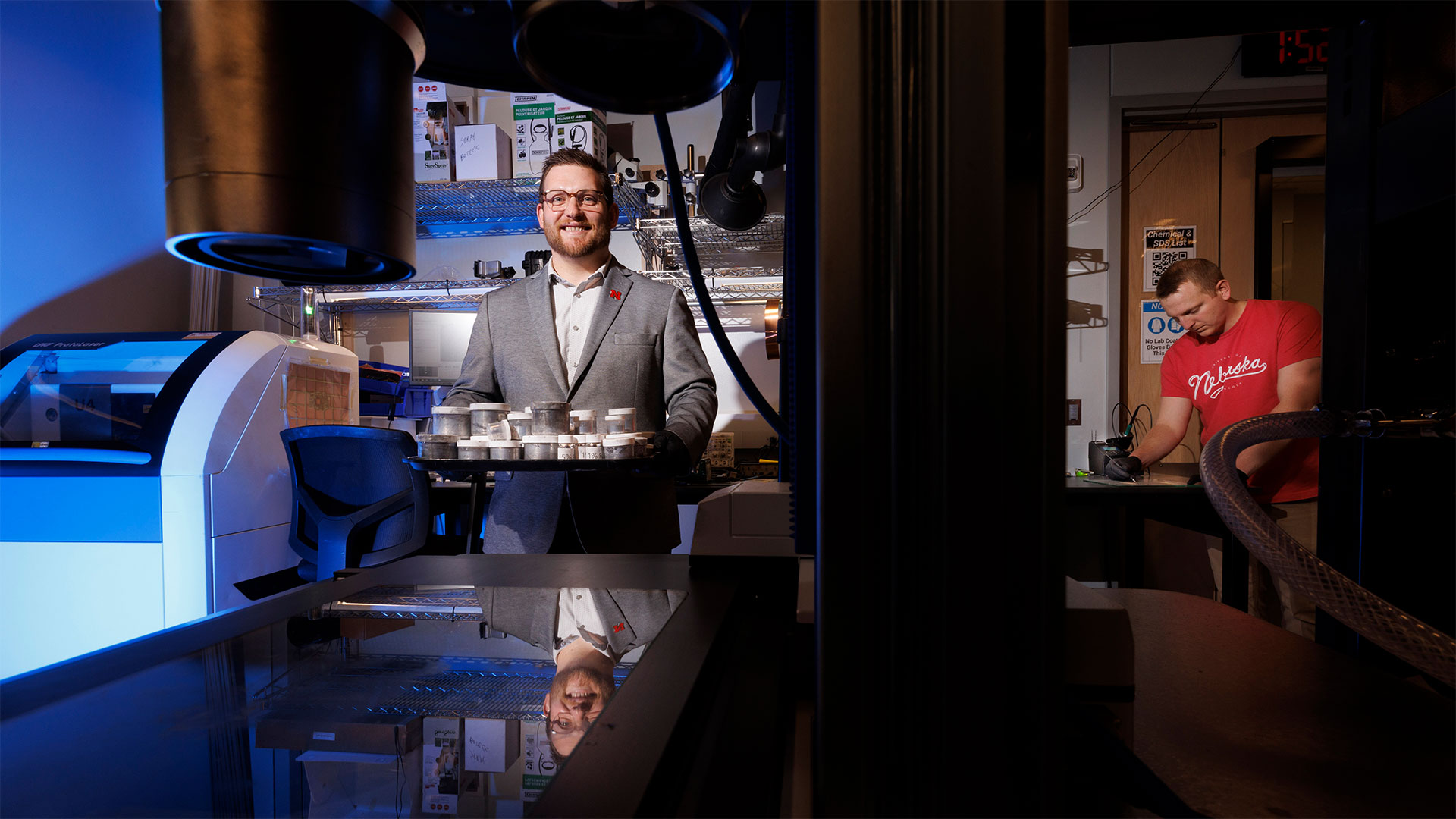Damage-sensing and self-healing artificial muscles heralded as huge step forward in robotics

Researchers have developed a self-healing artificial muscle for use in soft robotics and wearable systems. It mimics the ability of animals and plants to detect and self-heal injuries. This transformative development by the University of Nebraska–Lincoln engineering team is claimed to address a longstanding problem with synthetic systems.
Injury sensing and self-repair are obviously important features of organic life forms, but present a complex challenge for robotics makers. Thus, the researchers have gone down the tried and trusted path of biomimicry here.
It is explained that the key development presented is a system that can identify damage from a puncture or extreme pressure, pinpoint its location, and autonomously initiate self-repair. For this purpose, a multi-layer architecture was presented at the recent IEEE International Conference on Robotics and Automation in Atlanta, Georgia.
The muscle, or actuator, has three layers. At the bottom is a damage detection layer, which is a soft electronic skin composed of liquid metal microdroplets embedded in a silicone elastomer in this case. Next, a stiff thermoplastic elastomer is used as the middle layer, and this material acts as the self-healing component. On top, there us the actuation layer, the layer which contracts and expands with the variation in water pressure.
To create a self-repair mechanism that functions without external intervention also requires a variety of monitoring currents which flow in a network across the ‘skin’ of this design. Damage can thus be sensed as disruptions to the electrical network. Ingeniously, this triggers the same network to deliver heat to areas of damage, melting the thermoplastic layer to seal ruptures. This is “effectively self-healing the wound,” says the researchers.
What if there is further damage in the same area? The scientists have thought of this and have devised a step which resets the skin layer’s electrical network. The technique to implement the reset exploits the effects of electromigration, “a process in which an electrical current causes metal atoms to migrate,” it is explained. Without this system, the self-healing system would only be able to complete one cycle of damage and repair, so it is a very important innovation.
As the researchers are based in Nebraska, the first applications of this technology they mused about was in agricultural robots that get damaged by twigs or thorns. However, the team also see possibilities for the use of this technology in wearable health monitoring devices, and wider consumer electronic applications.
Get Tom's Hardware's best news and in-depth reviews, straight to your inbox.
Follow Tom's Hardware on Google News to get our up-to-date news, analysis, and reviews in your feeds. Make sure to click the Follow button.

Mark Tyson is a news editor at Tom's Hardware. He enjoys covering the full breadth of PC tech; from business and semiconductor design to products approaching the edge of reason.
-
SimonNVC We can rebuild him, we have the technology... 🤖Reply
Joking aside, I am surprised the potential use in providing artificial musculature for prosthetics was not suggested. -
Eximo Yes, fear the terminator that needs an external water pump/power source. They talked about harvesters, so these would be the soft appendages for grabbing fruit and stuff.Reply
Nuclear powered terminator never did sit right with me. In the first movie, if I recall, he was supposed to always be sweaty because the organic body was dealing with the excess heat of the system. I think they dropped that for the rest of the series, but it makes a lot of sense. Can't be more powerful than a human and stay cool.
A synth or replicant is a more feasible candidate idea for a terminator type robot. Hard to beat actual muscle in terms of strength/volume/energy requirements. Just need a programmable brain. -
bit_user Reply
Why? We have nuclear-powered space probes. It's not like they have water-cooled reactors on them.Eximo said:Nuclear powered terminator never did sit right with me.
https://www.tomshardware.com/pc-components/power-supplies/chinese-developed-nuclear-battery-has-a-50-year-lifespan -
Eximo Reply
RTG is pretty minimal power output. And space probes are surprisingly larger then you would think. The nuclear powered rovers were the size of large SUVs.bit_user said:Why? We have nuclear-powered space probes. It's not like they have water-cooled reactors on them.
https://www.tomshardware.com/pc-components/power-supplies/chinese-developed-nuclear-battery-has-a-50-year-lifespan
That particular battery is also an RTG, and 100 microwatts is not enough to power anything mobile on the scale of person. It is interesting because of its lifespan, not power output. -
bit_user Reply
Because they have lots of science instruments and equipment like drills. The rovers' reactors are not big - they weigh just 99 pounds.Eximo said:RTG is pretty minimal power output. And space probes are surprisingly larger then you would think. The nuclear powered rovers were the size of large SUVs.
Also, these are real-world systems which are built conservatively so they can withstand the rigors of liftoff, landing, and will continue to operate reliably, for years. If you really had to, and didn't care that much about the safety of others around it, it's plausible enough to me that you might be able design something even smaller and with significantly greater power density.
It proves a principle. That's the only reason I cited it. If they used a stronger isotope, it would raise all kinds of safety concerns, not to mention issues of legality.Eximo said:That particular battery is also an RTG, and 100 microwatts is not enough to power anything mobile on the scale of person. It is interesting because of its lifespan, not power output.
I wonder if @The Historical Fidelity can tell us what sort of energy output might be plausible, from a hypothetical nuclear battery consistent with Terminator technology. -
Eximo Even at 99 pounds the rover's RTG was rated at 110W, that is just about the energy output of a human body. Not the output that is necessarily a problem it is the energy conversion to something suitable for later use. ATP in the body is shockingly good at that which allows an output greater than what you would expect.Reply
So a potential android with an RTG would need some sort of storage system, either integrated into the 'muscles' or what have you. The endoskeleton alone is what doesn't work for me.
Regardless, all science fiction. Even the biochemical options that have been produced in labs are still lacking.

